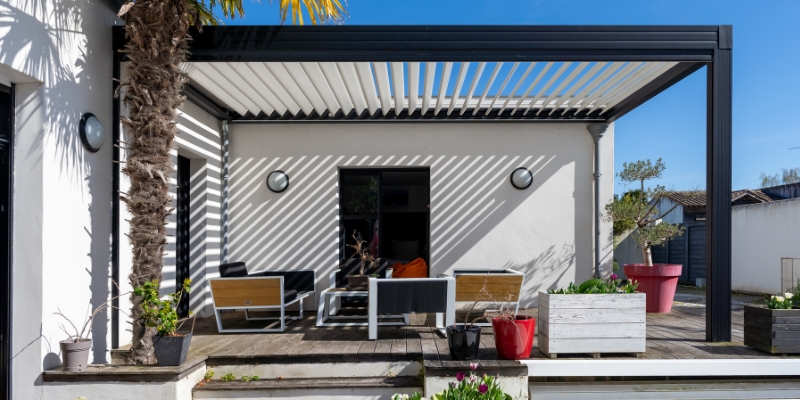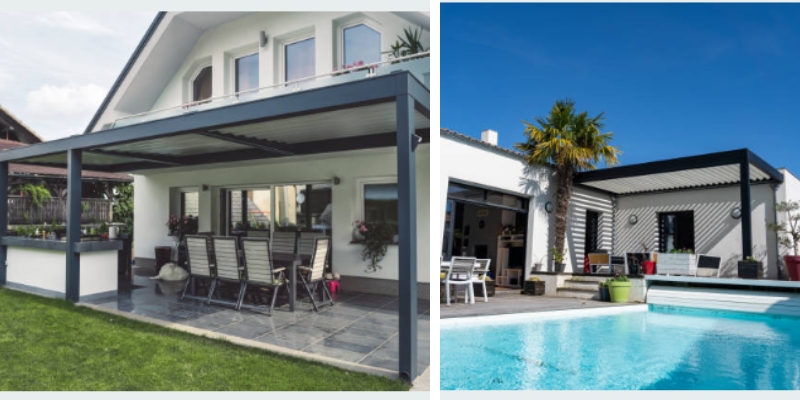
Wondering how to add a bit more utility to your garden or backyard? Raising your pergola might just be the perfect solution.
This very practical upgrade can dramatically increase the functionality of your outdoor space, making it more versatile for different activities and weather conditions.
By making your pergola taller, you create additional room for taller plants or outdoor structures, improve air circulation for a cooler and more comfortable environment, and even allow for the installation of new features like fans or lighting.
We’ll walk you through the process of how to raise a pergola efficiently and safely. Whether you’re aiming to expand and enhance your outdoor entertainment area or seeking to create a more spacious and airy ambiance, raising your pergola is a straightforward yet impactful way to achieve your outdoor living goals.
Let’s explore the steps to elevate your pergola, transforming your outdoor area into a more functional and inviting space.
How Do I Make My Pergola Taller?
To make your pergola taller, you can extend the existing posts with additional wood or metal, ensuring the new sections are securely attached and structurally sound.
Alternatively, you can replace the current posts with longer ones, which may require dismantling part of the pergola.
Keep in mind:
Always consider the stability and balance of the structure, and consult a professional if necessary.
What Is Proper Pergola Height?
Depending on the design and purpose, the ideal height for a pergola usually falls somewhere between eight and twelve feet.
To provide enough space for people to walk around and feel airy, a minimum height of 8 feet is ideal.
It is important to take into account the surrounding space’s scale and any applicable local building standards or requirements when determining the final height.
Options for Raising a Pergola

Building upon the idea introduced earlier, that raising your pergola can significantly enhance the utility and appeal of your outdoor living space, let’s explore the practical options available to achieve this transformation:
1. Installing an Extension Kit
- Method: This process includes attaching an extension kit to your pergola structure. It’s a straightforward and efficient method to expand the pergola’s dimensions, both in height and width.
- Materials: Select extensions made from materials that match your existing pergola, such as treated wood, aluminum, or vinyl, to ensure consistency and durability.
- Considerations: Verify that the extension brackets are compatible with your pergola’s design and dimensions. Proper alignment and secure fastening are crucial for maintaining the structural integrity of the extended pergola.
2. Replacing Smaller Posts with Taller Posts
- Method: This involves removing the existing posts of your pergola and replacing them with taller ones. It’s an effective way to increase the pergola’s height significantly.
- Materials: Opt for high-quality materials like treated wood or aluminum for durability and longevity.
- Considerations: Ensure the new posts are anchored securely into the ground. The stability of your pergola depends on the strength and installation of these posts.
3. Anchoring Pergola Posts on Elevated Concrete Slabs
- Method: This technique involves raising the base of the pergola by anchoring it on elevated concrete slabs. It’s a great option for a subtle height increase.
- Materials: Use pre-cast concrete slabs or pour your own custom slabs for a perfect fit.
- Considerations: The slabs must be level and well-supported to prevent any tilting or instability. Also, consider the drainage around these slabs to avoid water pooling.
4. Elevating Posts with Concrete Blocks
- Method: For a more moderate height increase, anchoring the pergola posts to concrete blocks is a practical choice. It’s less invasive than replacing the entire post.
- Materials: Select concrete blocks that are designed for load-bearing and ensure they are of uniform size for even elevation.
- Considerations: This method is generally not recommended for larger or heavier pergolas. For such structures, having them sit on a concrete pad, cutting through the pad, digging a hole, and pouring a cement piling into the ground offers more stability and support.
Can You Extend the Height of an Existing Pergola?
The ideas discussed above, such as replacing posts with taller ones, using extension brackets, or elevating the entire structure on concrete slabs, can be effectively applied to an existing pergola.
However, before embarking on this enhancement, a thorough assessment of your current pergola is crucial.
Assessing Your Pergola
- Evaluating Structural Integrity: Start by examining the condition of your existing pergola. Check the posts, your pergola roof, and any other structural components for signs of wear, damage, or instability. The strength of the existing structure will determine the feasibility of extending it. If your pergola shows signs of significant wear or damage, it may need repairs before any extension can be considered.
- Material Considerations: Take note of the materials your pergola is made from. Different materials, such as wood, aluminum, or vinyl, will require different approaches when it comes to extension. Matching the new additions with the existing materials not only ensures structural integrity but also maintains aesthetic consistency.
- Local Building Codes: It’s essential to familiarize yourself with local building codes and regulations. These codes dictate specifics such as maximum height, design standards, and safety requirements. Ensuring compliance is crucial not only for legal reasons but also for the safety and durability of your extended pergola.
- Professional Assessment: If you’re unsure about the condition of your pergola or how to proceed with the extension, consulting a professional contractor can provide valuable insights. They can assess the feasibility of the project, suggest the best extension methods, and ensure that the extended structure meets all safety standards and local regulations.
Budgeting and Cost Considerations
Transitioning from the technical aspects of making your pergola taller, let’s now focus on an equally important factor: budgeting and cost considerations.
Understanding the financial implications is crucial to ensure your pergola extension project is both feasible and aligned with your financial planning.
When estimating the costs associated with raising or extending your pergola, several key factors come into play:
- Material Costs: The choice of materials, as discussed in the previous sections, plays a significant role in determining the overall cost. Whether you opt for high-quality wood, aluminum, or need concrete for elevated slabs, each material comes with its own price tag. The quantity needed will also impact the budget, especially if you are replacing old posts with taller pergola posts.
- Tool and Equipment Expenses: Depending on the method you choose for extending your pergola height, you may need specific tools and equipment. For DIY enthusiasts, some of these tools might already be in your arsenal, while others may need to be purchased or rented, adding to the cost.
- Professional Services: If you decide to hire a professional contractor, especially for more complex projects like replacing posts or for creating concrete blocks their fees will constitute a significant portion of your budget. Professional services offer the advantage of expertise and efficiency but at a higher cost compared to DIY approaches.
Summary
To wrap up our comprehensive guide on how to raise a pergola, let’s quickly summarize the key points we’ve covered:
- Multiple Methods: We explored various methods to raise a pergola, including replacing posts with taller ones, using extension brackets, and anchoring on elevated concrete slabs and concrete blocks.
- Structural Assessment: Assessing the existing pergola’s structure for feasibility is crucial, along with considering local building codes and compliance.
- Material and Cost Considerations: We emphasized the importance of selecting high-quality materials and discussed budgeting, including material costs, tools, and professional services.
- Professional Help vs. DIY: The choice between DIY and hiring professionals depends on the complexity of the project and your skill level.
Remember, a well-executed pergola extension not only adds value to your home but also enriches your outdoor living experience.


